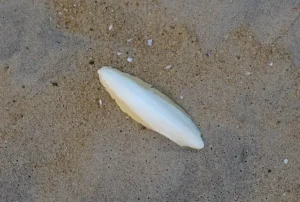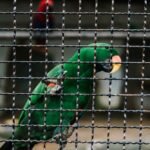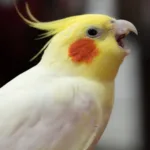Most parrots that you will adopt from the shelter do not have a historical record of any kind. They have no information about their age, gender, or past family. However, determining a parrot’s age is important for they require different care at different stages of life.
Once a parrot has fully matured, there is almost no way to know their exact age without knowing the hatch date. However, you can use certain physical and behavioral cues to estimate your parrot’s age. This is not completely accurate but it can help you know whether the parrot is young or an older bird.
Quick Navigation
How To Estimate The Age Of A Parrot?
Parrots age differently from humans. They have a long life span, but they mature relatively early. Because of this, it is hard to tell the difference between a parrot who has just matured compared to one who is middle-aged. However, there are a number of physical and behavioral signs that you can use to estimate a parrot’s age.
Eye Color
The eyes of an adolescent parrot are darker and have larger pupils. As the parrot ages, their eye color becomes lighter and develops a white ring around their iris. This is most noticeable in parrots with black eyes.
Beak Size And Color
When parrots are young, they typically have smaller and less pointy beaks. The beak gradually grows longer over time when the parrot matures.
Young parrots also have much smoother beaks. Adult parrots almost never have smooth beaks because it is constantly growing underneath and replacing keratin material. Young parrots do not have to trim their beaks yet, so they do not rub them on surfaces, which gives their beaks a smooth appearance.
The color of a baby parrot’s beak appears less colorful in contrast to adult parrots, especially if the parrot has a light-colored beak. It is harder to notice any difference in parrots with black beaks.
Plumage
One of the ways you can tell a young parrot apart from an old parrot is by looking for distinct features in feathers that only show up when a parrot matures. There are certain species-specific developmental differences in parrots.
For example, Indian ringnecks have a special black-colored ring around their necks, which develops when the bird is about 18 months of age. If the Indian ringneck does not have a ring, it means it is either a baby or a female.
Similarly, African grey parrots have a physical difference in their red tail feathers. Baby African grey parrots have dark feather tips. In contrast, adult African grey parrots have bright red tail feathers with no dark tips.
Another example is the Amazon parrots. Most Amazon parrots have a distinct marking on their forehead which develops as the bird matures. Baby amazons have lighter facial markings compared to adults.
Behavioral Cues
If you pick up a young parrot, you will notice that they grip much harder and have a wobbly stance. Compared to this, adults have a firm and secure grip.
How To Tell If Your Bird Is Old?
Dull-Looking Feathers
In their senior years, parrots can often have duller and less vibrant feathers. These changes are more apparent in very old age. This is a natural aging process for parrots, which is influenced by factors such as diet, hormones, and less grooming.
Activity Levels
Parrots are usually very active in their cage. They hand by the cage bar, play with toys, and vocalize. However, old parrots are much less energetic. The low activity levels are due to changes in metabolism, age-related joint problems, and potential health issues. Older parrots prefer a relaxed lifestyle, spending more time perched or resting.
Sleep Cycle
Parrots typically sleep 10-12 hours a day. However, senior parrots require more rest and usually sleep 1-2 hours extra. They may also take longer daytime naps as they need longer to recharge their energy.
Less Vocal
Old parrots are generally less chirpy and enthusiastic. The change in vocalization is a consequence of various factors, including changes in hormone levels, health conditions, and simply behavioral changes over time.
Age-Related Ailments
When parrots reach old age they become susceptible to certain types of diseases. It is usually okay to skip vet visits with a younger bird, but if you have a senior parrot taking them to the vet for a full check-up is crucial.
Common health concerns in aging parrots include arthritis, heart disease, cataracts, renal disease, and respiratory diseases. As parrots age, their immune system weakens, making them more prone to infections. Issues with eyesight can also arise.
In addition to that senior parrots can also have problems such as overgrown beaks and nails, which can make eating and perching difficult.
Can DNA Testing Show A Parrot’s Age?
DNA testing can be used to determine the age of a parrot and can provide the closest estimation. One common technique used for age determination is telomere testing. It involves measuring the length of a parrot’s telomeres, which are protective structures at the end of chromosomes that shorten as an organism ages.
According to the Philosophical Transactions of the Royal Society, bird species with longer lifespans lose fewer telomeres each year compared with species with shorter lifespans.
The obtained telomere length data is then compared to a database, which contains telomere information of the same species of parrots. By matching the telomere length with this database, the biological age of a parrot can be determined. Unfortunately, telomere age testing is currently not available for birds. It is only available for cats and dogs.







